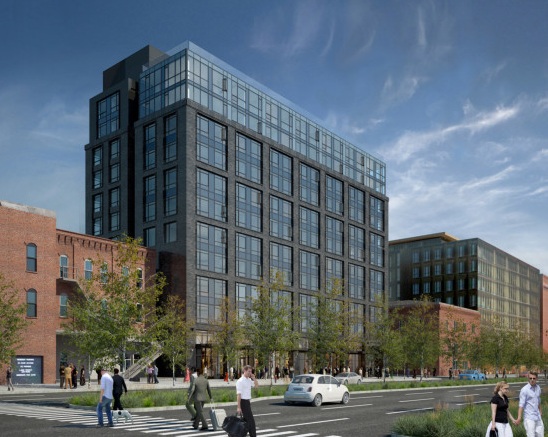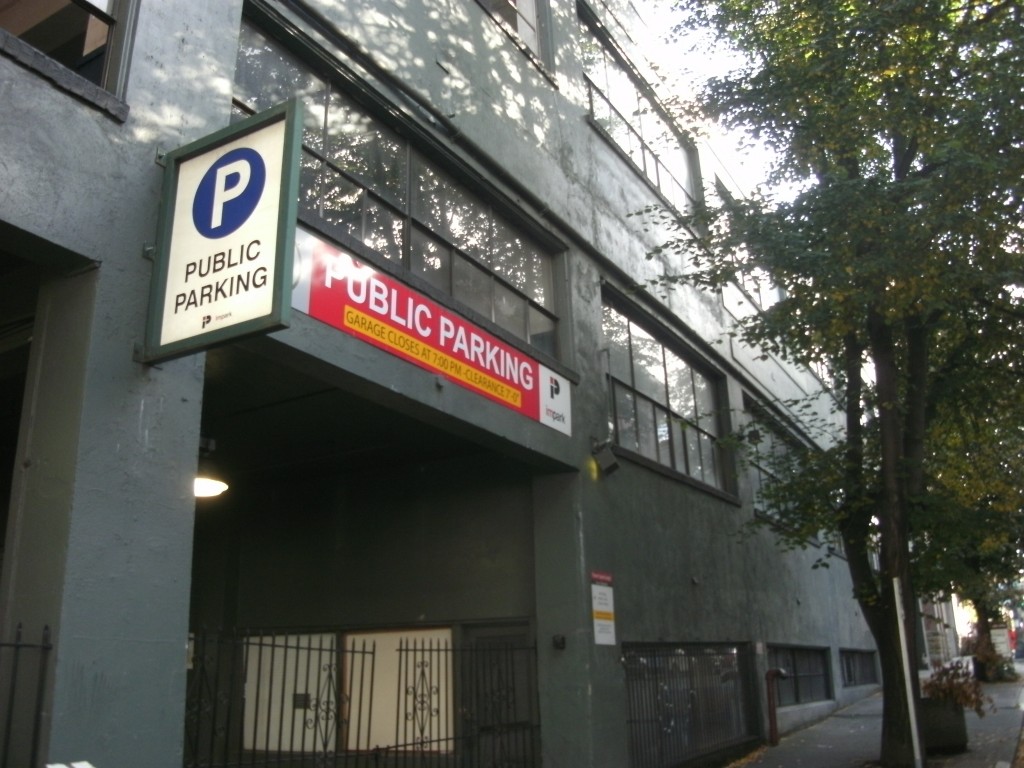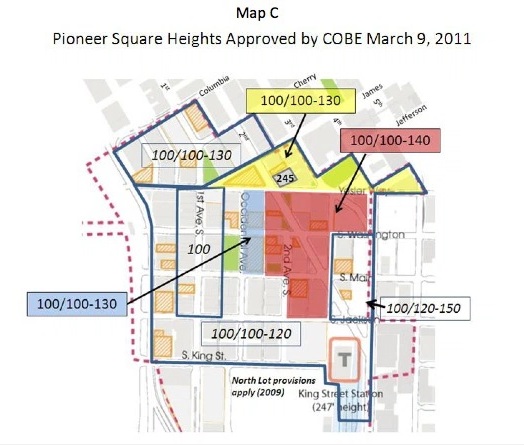A lot of drama has been brewing over the past few months in Pioneer Square. That’s because one developer has proposed a new 11-story building on the edge of the historic district. Wedged between the Alaskan Way Viaduct and S Jackson Street, the current structure falls within the boundary of the district that generally serves to preserve things in amber. That building, however, is a parking garage and, as such, has been deemed a “non-contributing structure.” Naturally, the old must go to make way for the new, and that has rustled old feathers.

On July 15, the Pioneer Square Preservation Board voted 9 to 1 to reject the proposal presented by the building’s developers, on the following factors: “The proposed building façade is larger in scale than other buildings in Pioneer Square and therefore not compatible with surrounding buildings. The proposed street elevations do not relate to the scale of the buildings in the immediate area. The proposed building is not visually compatible with inherent historic character of the District.”

Days later, the Board’s recommendation not to approve the proposal was overturned by Kathy Nyland, Director of the Department of Neighborhoods, who argued that the preservation board did not have grounds to reject the proposal based on the criteria it cited. “The approval of buildings will go to what’s allowable under height limits. That’s the bottom line,” she said.
This new building was set to take full advantage of a 2011 zoning change that raised the allowable height on its block to 120 feet if certain criteria were met; previously the height limit was around 90 feet. It was at this time that there was a robust debate at the City Council level on the best height limits to allow in zoning to “revitalize” Pioneer Square. At that time, the Council brokered a compromise between those who wanted height limits to dramatically increase — to 180 feet in places — and those who wanted them to remain the same. The most notable change that took place at that time, however, was a move away from variable zoning, which required that buildings be no higher than 15 feet above the neighboring buildings.

In other words, four years ago there were similar arguments held at the Council level over buildings exactly like the one in question. The exact same people who are involved now were involved then, and succeeded in watering down an upzone proposal for new development in Pioneer Square. Height limits were agreed on and a compromise was reached. And then this year, the historic preservation board decided that the existing zoning, if fully utilized, would be out-of-scale with the neighborhood despite approval by a majority of the elected members of the City Council.
This is clearly problematic. Was it the intention of the City, when creating the historic preservation districts, to allow them to have veto power over Council-approved zoning regulations? If this is the case, what other regulations might preservation boards have authority to overrule?
In late September, a city hearing examiner put the project on hold due to the conflicting decisions regarding the project. The outcome of this episode could have repercussions across Pioneer Square, and in the other seven historic districts in Seattle, leading to a fundamental change in how those boards are overseen.
Ryan Packer has been writing for The Urbanist since 2015, and currently reports full-time as Contributing Editor. Their beats are transportation, land use, public space, traffic safety, and obscure community meetings. Packer has also reported for other regional outlets including BikePortland, Seattle Met, and PubliCola. They live in the Capitol Hill neighborhood of Seattle.


